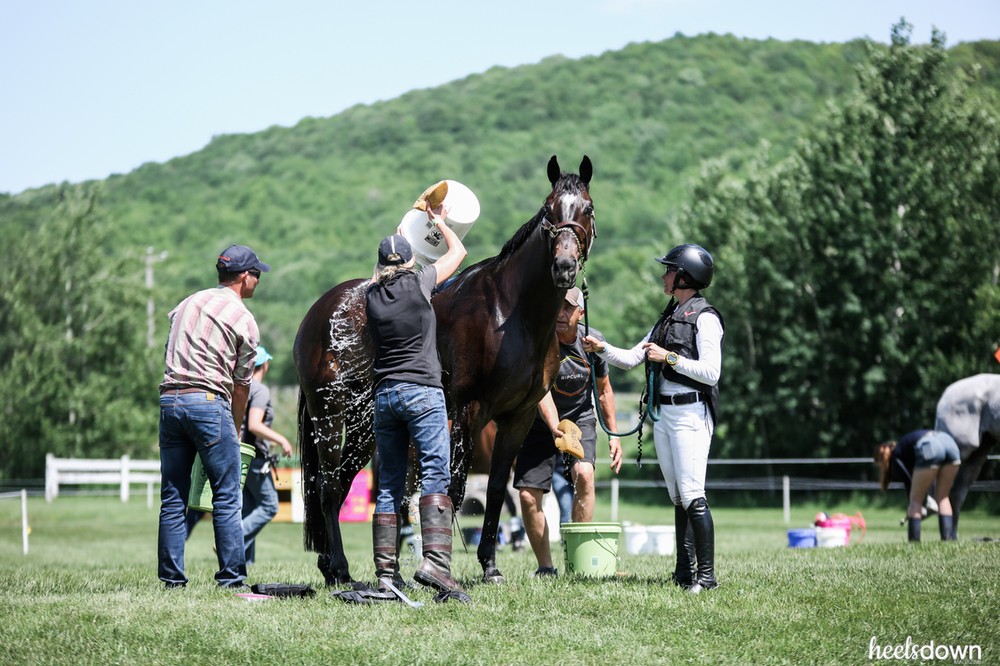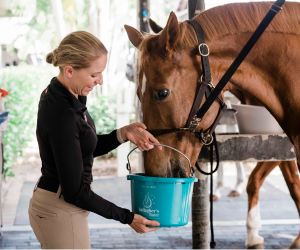What to Pack for the Vet Box

Venture onto the grounds at any FEI three-day event on cross-country day, and you’ll surely notice a roped off area near the finish line, where grooms and riders feverishly work to cool their horses off quickly after coming off course. If you’re an eventer, chances are you’ve got a mild familiarization with the vet box – but what the heck do you even need for it?
The vet box is the final compulsory stop on cross-country at the FEI levels and at traditional, long-format three-day events. The purpose of this area is to allow the horses a chance to be cooled off quickly after the exertion of a tough course under the supervision of a veterinary panel and ground jury. Horses’ temperatures and respiration rates will be monitored during the cool-down process, helping ensure the safe recovery of each athlete.
Knowledgable grooms will have an organized plan for the vet box, as it can be a hectic environment. First up, supplies:
At many events, you’re able to set up your “cool-down area” ahead of time. If this is an option, do it! It will only save you time later. Carry up enough buckets or a muck tub to fill with cool water, and if you have a wheelbarrow (even a big bag works!) or something else to chuck the tack into, it’ll save you from a laborious walk back to the barn later.
Stock plenty of sponges, towels/rags and sweat scrapers – multiple hands cooling off a horse saves time.
Make sure you have the horse’s halter and lead rope, and it doesn’t hurt to at least bring an extra lead rope just in case.
A spray bottle with rubbing alcohol can help with spot cool-downs and muscle soothing on particularly hot days. Remember, not all liniments are allowed in FEI competition, so best to err on the side of caution here.
An assortment of minor emergency equipment – vet wrap, supplies to wrap a hoof in the event of a lost shoe, scissors, duct tape – you never know what you might need!
A bottle of water or a cold sports drink for your rider!
Next, organize the troops:
Figure out who is coming to help at the vet box ahead of time. There is such a thing as too many cooks in the kitchen, especially if you have a horse who comes off cross-country a bit high on life. Assign each person a specific job – perhaps you have two designated water and sweat scraping people, one person to walk the horse, and another to pull tack off. However big or small your group is, make sure everyone knows their job(s) before your horse and rider come back.
Keep an eye on the horse as he cools off. While the vet will check his temperature and breathing periodically, this is something you should be monitoring as well. You (usually) know the horse better than just about anyone, so keep an eye out for any sort of strange behavior that might indicate distress.
Get a move on! Keep the horse walking and moving during the cooling out process – this can help prevent muscle stiffness and soreness later on!
PS: For more on the importance of a proper cool-down and movement after a work, click here.
The vet box is something everyone should see at least once – it’s a true testament to teamwork and horsemanship. Utilize these tips to stay on your toes on your next trip to the vet box, and don’t forget a pocket full of treats.

